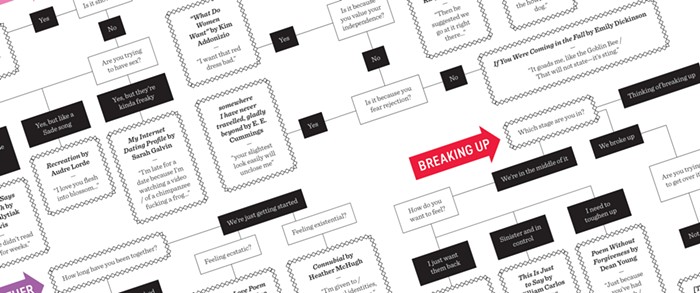The thing about being a giantess is that it hurts all the time. Ana Swift, the tallest woman in the world and the center of a new novel called Among the Wonderful, is always in physical pain—her overlong bones ache, and standing is basically a defiance of structural impossibility that puts a great deal of wear and tear on her body. Debut novelist (and Seattle native) Stacy Carlson puts us inside Swift's creaking, enormous body and walks us through all the rituals that it requires—nightly soaking of her legs and a daily rebuilding of her normal-sized bed, which collapses under her weight—to simply exist.
It's an exhausting life being nearly eight feet tall, and that's even before you throw in the difficulties that come with taking that huge body out in public, where people can poke and prod at it with their eyes and their whispers. In the time in which Swift was born (the middle of the 19th century), she has absolutely no options for a normal life, so she becomes a star attraction at a New York City museum that has been assembled by a young showman named P. T. Barnum.
Authors love a good circus, and they love the freak show most of all. From Ray Bradbury's Something Wicked This Way Comes to Darin Strauss's Chang and Eng, authors have used the circus to stand in for the exceptional (if they're positive depictions) or abnormal (if the circus is malevolent) side of human nature. Circuses have represented both our innocence and the loss of that innocence, depending on who is telling the story. In recent years, as the popularity of circuses has declined (and as awareness of the mistreatment of circus animals has increased), depictions of circuses have become tamer, more nostalgic. Darren Shan's Cirque du Freak series of young-adult novels features what is basically a riff on Bradbury's demon carnival, and Sara Gruen's wildly popular Water for Elephants is an excruciatingly soft-lit look back at a world that never was, where circus people—except for the evil ringmaster who stands in our heroes' way—are a polite family, banded together to entertain the world that abandoned them.
Carlson avoids some of these exhausted tropes by setting her story before the dawn of the modern circus, in the little-explored days when Barnum was a museum man. This way, her Swift (who is actually based on Barnum's real giantess, Anna Swan) can ruminate on the ideas of public performance ("It will surprise no one that boredom is the greatest, the most contagious evil in the show business. When it overtakes a talker or a showman, the audience is lost." One can almost hear Carlson chiding herself into taking her own advice as she writes that passage), but she and her fellow freaks can live inside the comfort of a firm sense of place. By removing the vagabond aspect from the circus—by stripping it of the near-mystical aura of freedom that has tinted most circus narratives, lately, for the worse—she's free to explore the circus life as a job and as a home.
And Swift is a most charming narrator with which to explore this world. She chafes at performance, but her job is simply to stand there in her booth and be gawked at, so she abides. Her favorite part of the experience—aside from the games of whist with the conjoined twins and other freaks—is the task of writing her own fictionalized biography, The True Life History, which is sold in pamphlet form as a souvenir. ("Eventually I would revise it, but for now, the simple act of writing mesmerized me: the symmetry of a stately H, the r's small plateau, the continuing scrawl that could include any fancy, true or otherwise, that my mind could spawn.") She pities herself, but she tries to make her world a better place by forming a labor union. And she finds a kindred spirit in an enormous beluga whale whose tank takes up residence on the fifth floor, next to the freaks' dormitory.
Wonderful, like most debut novels, is fraught with missteps. Swift shares narration duties with a taxidermist whose perspective should have been written out altogether, for example. It's nearly a hundred pages too long. But the climax is a beautiful piece of operatic writing, and several moments sing with a naughty transgression. Barnum explains what he has in common with Jesus Christ in the Gospel of Mark:
He relies on something better to convey his message, something inherently compelling: mystery itself. And public performances, of course: healings and exorcisms, wine from water, all that sort of thing. This Jesus gives you an opportunity to live through the experience of puzzlement yourself.
The great mystery of Wonderful is that Barnum, the flashiest character of the 1800s, doesn't keep center stage. Instead, all our focus, and the entirety of our affection, is directed to the noticeably slouching giantess at the fringes of the action. That's some kind of show-business magic at work. ![]()



















